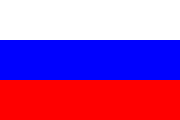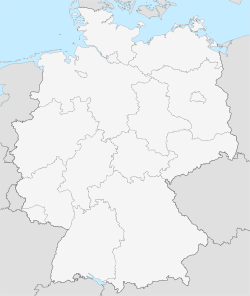Wolfsburg
|
||||||||||||||||||||||||||||||||||||||||

Weser watershed with Wolfsburg (right center).
|
||||||||||||||||||||||||||||||||||||||||
Wolfsburg is a city in Lower Saxony, Germany. It is located on the River Aller northeast of Braunschweig (Brunswick). Wolfsburg is bordered by the districts of Gifhorn and Helmstedt.
Contents |
History
The city of Wolfsburg is very young, since it was planned by the Nazis in order to build a town for the workers of the Volkswagen factories. It was founded in 1938 as Stadt des KdF-Wagens ("City of the KdF Car") around the village of Hesslingen in the District of Gifhorn. Kraft durch Freude (abbreviated KdF and meaning "strength through joy") was the German state-controlled leisure organization; one of its projects was the KdF-Wagen, which would later be known as the VW Beetle. During World War II there were also jeeps, airplanes and other military equipment built, mainly by forced workers and POWs at these factories.
After World War II, in 1945, the city got its present name after the Wolfsburg castle located in the city, which was founded about 1300 on the bank of the Aller river. Today there is another castle at the place, which was built after 1600. In 1951, Wolfsburg was separated from the District of Gifhorn, and became an urban district. In November 2003, Wolfsburg was renamed Golfsburg for one week to celebrate the 5th generation of the Volkswagen Golf.
Main sights
Wolfsburg lacks historical buildings, and the sights include new attractions like the Autostadt (a huge open air museum about automobiles, owned and operated by Volkswagen), a planetarium, the Phaeno Science Center, the largest hands-on science museum in Germany, and an excellent private art museum (Kunstmuseum Wolfsburg) specialized on modern and contemporary art.
Until the fall of the Iron Curtain and the dismantling of the Berlin Wall, Wolfsburg was simply a place along the road to Berlin just inside West Germany.
With the opening in 2000 of Autostadt and that of Phaeno, as well as restaurants and a Ritz Carlton Hotel, tourism increased.
Sport
The most famous professional sports club in the city is VfL Wolfsburg, that was established in 1945.
Twin towns
 Luton, United Kingdom, since 1950
Luton, United Kingdom, since 1950 Marignane, France, since 1963
Marignane, France, since 1963 Province of Pesaro e Urbino, Italy, since 1975
Province of Pesaro e Urbino, Italy, since 1975 Halberstadt, Germany, since 1989
Halberstadt, Germany, since 1989 Changchun, People's Republic of China
Changchun, People's Republic of China Togliatti, Russia, since 1991
Togliatti, Russia, since 1991 Bielsko-Biała, Poland, since 1998
Bielsko-Biała, Poland, since 1998 Taubaté, Brazil
Taubaté, Brazil
Associated cities:
 Sarajevo, Bosnia and Herzegovina since 1985
Sarajevo, Bosnia and Herzegovina since 1985 Toyohashi, Japan since 2002
Toyohashi, Japan since 2002
External links
- Wolfsburg at Dmoz
- Autostadt
- Phæno - science museum
- AutoUni - MobileLife Campus - university
- City of Wolfsburg
- Wolfsburg Art Museum
- Wolfsburg travel guide from Wikitravel
|
|||||||||||


